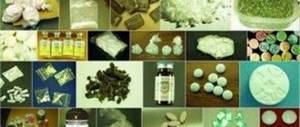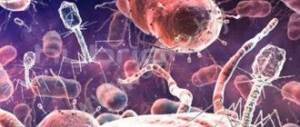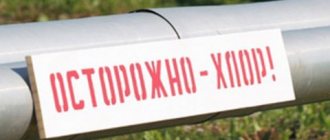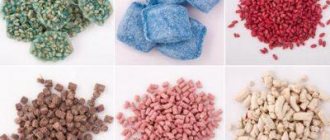More than 8 million tons of phenol are produced annually in the world for various industries. The chemical compound belongs to the second hazard class and is highly toxic . After even a small dose of substances enters the human body, phenol poisoning develops. This condition provokes the rapid occurrence of severe complications, in most cases ending in death.
Characteristics of phenols
They are crystalline substances or boiling liquids without color, but with a strong, specific odor. Upon contact with O2, an oxidation process occurs. Phenol is quite volatile and evaporates quickly at room temperature. Because of this, poisoning by inhalation is rare. Highlight:
- Monatomic. These include cresol and chlorophenol.
- Polyatomic. This group includes resorcinol and hydroquinone.
Phenol or oxybenzene is a colorless crystal. Technical or carbolic acid is a red-brown liquid. The maximum permissible concentration for this substance is 5 mg/m3.
...And disappeared
In Nina Kasatkina's apartment, wallpaper, ceiling tiles and a bookshelf were taken for analysis. However, nothing dangerous was found. True, regarding the bookshelf, there is a conclusion that at temperatures above 40 degrees, an increased release of formaldehyde actually occurs.
– But where in our apartment can it be 40 degrees? – Nina Kasatkina asks rhetorically.
Residents were asked to leave their apartments for a while and remove all furniture. It is already the fourth month that families have been living in rented apartments, which are paid for by the mayor's office.
Recent examinations have shown that the content of phenol and formaldehyde does not exceed the permissible limit. That is, it is logical to assume that the danger lay in the furniture. But the residents themselves do not believe this. After all, the smell from the apartments has not disappeared anywhere.
“I have a three-room apartment, my neighbor has a one-room apartment, I have much more furniture than she does,” says Nina Kasatkina. “She has one closet, a bed and a sofa. And our tests for phenol and formaldehyde were the same.
Application of phenols
Used in various fields. In industry they add during production:
- Dyes.
- Plastic masses.
- Phenolic resins.
- Disinfectants.
Previously, telegraph poles and rails were impregnated with carbolic acid. Used in medicine to obtain:
- Many medications.
- Means for destroying microorganisms.
- Salicylic and picric acid.
- Medical soaps.
Used in agriculture for the following purposes:
- Destruction of various pests.
- Soil fertilizers for growing plants.
- When caring for animals. Used to disinfect places where they are kept.
Used for preserving leather and wood.
Previously, formaldehyde was used to make furniture. Known cases of poisoning with this substance at home. Now it is used for construction purposes. Used to harden concrete. There is even the expression “phenolic houses” since this compound is a derivative analogue.
"We want to live at home"
There is no reason not to trust pensioners. Other people can smell it too.
“The smell is such that it’s impossible to be there,” says Anna Brylevich, a neighbor on the first floor.
“It’s like there’s a strong smell of paint,” TV journalist Anna Shottueva tells TV. “And this despite the fact that all the furniture has been removed and the apartments are empty. The cameraman and I were there for only half an hour, and our health worsened. I felt dizzy and my throat felt dry.
“They tell me that I just don’t want to live here.” That’s why I’m making it up,” Nina Kasatkina’s voice trembles with tears. – I have a wonderful three-room apartment, second floor, balcony. Knowing that there is no construction going on in Segezha, can I hope for something better?!
And 73-year-old Raisa Pavlova and her 78-year-old husband had to move from a one-room apartment to a wooden house temporarily allocated by the mayor's office.
“We had a one-room, comfortable, clean apartment,” says Raisa Alekseevna. “And we were pushed into this mud.” The apartment is old, neglected. In the spring the rats were poisoned. They tell me at the mayor’s office: “Sell the apartment.” But who will buy it with such a smell?
The city hall of the “Karelian Province” promised that they would find another laboratory, a more modern one. But how much is possible? After all, the case has been dragging on for two years already. It seems that they simply don’t want to look for the cause of the poisonous stench. It’s easier to advise old ladies to hold their noses and open the windows wider.
Phenol toxicity
They are dangerous substances that can cause lethal poisoning at a certain concentration. Monatomic ones have the effect of:
- Annoying.
- Necrotizing.
They are considered nerve poisons. The toxicity of polyatomic is expressed as follows:
- They cause a general toxic effect.
- They are classified as methemoglobin formers.
Under their influence, hemolytic jaundice is formed. Considered a blood poison.
By aromatic ring:
It undergoes electrophilic substitution reactions on the aromatic ring. The hydroxy group, being one of the strongest donor groups (due to a decrease in electron density on the functional group), increases the reactivity of the ring to these reactions and directs substitution to the ortho and para positions. Phenol is easily alkylated, acylated, halogenated, nitrated and sulfonated.
The Kolbe-Schmitt reaction serves for the synthesis of salicylic acid and its derivatives (acetylsalicylic acid and others).
{\displaystyle {\mathsf {C_{6}H_{5}OH+CO_{2}{\xrightarrow[{}]{NaOH))C_{6}H_{4}OH(COONa)))}
{\displaystyle {\mathsf {C_{6}H_{4}OH(COONa)+H_{2}SO_{4}\rightarrow C_{6}H_{4}OH(COOH)+NaHSO_{4))))
Interaction with bromine water (qualitative reaction to phenol):
\mathsf{C_6H_5OH + 3Br_2 \rightarrow C_6H_2Br_3OH + 3HBr}
2,4,6-tribromophenol is formed - a white solid.
Causes of poisoning
Adults and children are susceptible to intoxication. It occurs when non-compliance:
- Rules for working with substances containing phenol.
- Personal safety when in contact with compounds of the second hazard class.
The reason is the improper use of disinfectants. A child can be poisoned if he is in a closed room where there are phenol-containing liquids. An additional source is low-quality children's toys.
Signs of intoxication develop within a short time. It is not difficult to recognize them. Vapor poisoning is the most severe. Help for the victim should be provided as early as possible.
"Phoning" objects
A small amount of radiation radiation falls on the same concrete, since it contains crushed rocks - granite and basalt, and these, in turn, contain tiny particles of thorium and uranium. The period of their decay exceeds the lifespan of the Earth and amounts to 4.5 billion years. At the same time, they emit radon, which we will discuss in detail below. Fortunately, the volume of this inert gas is extremely small, which does not negate the precautions: frequent ventilation will prevent the gas from accumulating.
Now about serious sources. 137 Moscow enterprises, as well as an unknown number of military units, deal with radioactive industrial waste. They all store them in their own way, eventually sending them to a burial ground in the Sergiev Posad region. This is an exemplary storage facility with very high quality control. The nearest settlement (4 km from it), according to representatives of the Federal State Unitary Enterprise Radon, is not in danger. But not all Moscow radiation cemeteries are perfectly sealed and safe.
Symptoms and forms of phenol poisoning
Depends on the route of entry into the human body. It occurs in two clinical variants.
Acute
Develops in the first 30 minutes after contact with phenol. Poisoning is accompanied by:
- Severe headache.
- Nausea, vomiting.
- Burns of mucous membranes.
- Painful sensations.
In the acute version, coma, convulsions, and breathing problems may develop.
Chronic
The symptoms of this form are characterized by less intensity. Specific to her:
- Feeling weak.
- Increased sweating and fatigue.
- Sleep disturbances, persistent headaches.
Signs depend on the duration of contact with phenol. Damage to the liver and central nervous system gradually develops. Yellowness of the skin may be observed.
Signs of vapor poisoning
Administered by inhalation. Symptoms occur acutely and are characterized by:
- The appearance of weakness and dizziness.
- Formation of an excited state.
- Increased salivation.
- Cough, breathing problems.
A laboratory test reveals protein and red blood cells in the victim’s urine.
Skin contact
The first symptoms occur when 2–3% phenol is applied to an area of the body. Poisoning by the transcutaneous route develops quickly. The clinical picture has its own characteristics:
- There is tingling or numbness. These signs are formed at the point of contact.
- Manifestations of burns develop.
- An area of blanching appears on the skin. Then he wrinkles and turns red. Gradually, blisters form, which open with the appearance of ulcers. This area of skin may undergo necrosis.
Contact of phenol on large areas of the body leads to the development of systemic changes. The function of the central nervous system, breathing, digestion and blood circulation is impaired. An increase in temperature is noted.
Ingestion of carbolic acid
May be fatal. Symptoms of phenol poisoning are as follows:
- Burn of the mucous membrane of the oral cavity, esophagus, stomach.
- Characteristic odor of acid.
- Sharp pain in the throat.
- Violent vomiting with blood and a specific aroma.
- Breathing problems. It is difficult for air to pass through the upper passages.
- Pallor of the skin is observed.
- Pupil dilation.
There is a sharp decrease in body temperature. The victim's functional activity of the heart decreases. Profuse sweating is characteristic.
Taking carbolic acid is accompanied by kidney damage. The patient experiences changes in the color of urine. It turns dark green. Convulsions may form. Without treatment, the person falls into a coma.
By hydroxyl group:
It has weak acidic properties (stronger than alcohols); when exposed to alkalis, it forms salts - phenolates (for example, sodium phenolate - C6H5ONa):
\mathsf{C_6H_5OH + NaOH \rightarrow C_6H_5ONa + H_2O}
Phenol is a very weak acid; even carbonic acid displaces it from phenolates:
{\displaystyle {\mathsf {C_{6}H_{5}ONa+H_{2}CO_{3}\rightarrow C_{6}H_{5}OH+NaHCO_{3))))
Phenolates decompose more intensively under the influence of strong acids, for example, sulfuric acid:
{\displaystyle {\mathsf {C_{6}H_{5}ONa+H_{2}SO_{4}\rightarrow C_{6}H_{5}OH+NaHSO_{4))))
Interaction with sodium metal:
\mathsf{2C_6H_5OH + 2Na \rightarrow 2C_6H_5ONa + H_2\uparrow}
Phenol is not directly esterified with carboxylic acids; esters can be obtained by reacting phenolates with anhydrides or acid halides:
{\displaystyle {\mathsf {C_{6}H_{5}ONa+CH_{3}COCl\rightarrow C_{6}H_{5}OCOCH_{3}+NaCl))}
{\displaystyle {\mathsf {C_{6}H_{5}ONa+(CH_{3}CO)_{2}O\rightarrow C_{6}H_{5}OCOCH_{3}+CH_{3}COONa)) }
First aid
Conducted immediately after detection of a poisoned victim. It is necessary to call doctors to provide qualified assistance. You should report the possible cause of intoxication by telephone. Before medical workers arrive:
- Provide the victim with fresh air. Open all windows into the room.
- Sharply limit contact with the toxic substance. In a production environment, such a person is immediately removed from work despite feeling well.
- If clothing gets wet, you must remove it immediately.
- Wipe the contact areas with ethyl alcohol or vegetable oil.
- Wash your body with warm water and soap.
When providing first aid, the victim should be ensured a state of complete rest. You can give him sedatives.
In case of phenol poisoning, it is contraindicated to take fat, milk, or alcohol orally. You should also not induce artificial vomiting.
Who should sniff?
According to recent expert opinions, you can live in peace again in suspicious apartments. But people are still bothered by the smell.
- Yes, there was a smell. I don’t know whether he exists now or not,” Margarita Chepets, head of the Segezha department of Rospotrebnadzor, answered us. “It’s not our responsibility to sit and sniff.” They obliged the administration, that’s their job. Everyone has their own smell in the nose: some smell of medicine, others smell of mustiness.
“There is a smell when the windows are closed, but when ventilating there is no smell,” confirmed the head of Segezha, Sergei Dolgachev. “But we don’t react to odors, we call the laboratory.” After all, the furniture was taken away and checked twice - there were no excesses.
According to Sergei Dolgachev, Nina Kasatkina’s apartment can only be declared uninhabitable based on laboratory tests. And since they showed that everything is fine, nothing can be done, the residents will have to return to the smelly housing. The mayor's office is not responsible for Raisa Pavlova's apartment at all, since the living space has been privatized. That's why the pensioner filed a lawsuit. But there is a possibility that in light of new research, the court will reject the claim.
“There is no documentary evidence that furniture is the cause of the release of harmful substances,” assistant prosecutor of the Segezhsky district Dina Korzhova was somewhat reassured. – In court, explanations from specialists will be needed; it may be advisable to repeat the study. The prosecutor's office is keeping this issue under control.
Treatment methods
Depends on the route of phenol entry. When inhaling vapors, the following therapy is carried out:
- The victim needs alkaline inhalations.
- Antitussives and painkillers are given.
- Supply of oxygen mixture.
- Restoration of cardiac activity.
- Glucose is given with ascorbic acid.
In this condition, the victim is given sedatives to take. They use bromide groups and valerian.
Treatment of poisoning from ingestion of phenol:
- Intravenous administration of sodium thiosulfate.
- Setting up an IV with glucose and vitamin C.
- They give thiamine and caffeine.
- Pure oxygen or its mixture is supplied.
The victim must always be hospitalized. In the hospital, the patient is provided with complete rest. If severe intoxication develops, mechanical ventilation is performed. There is no antidote for phenol.
The chronic form is treated with:
- Stop contact with phenolic compounds.
- Suspensions from work.
- Restoration of impaired functions.
- Correction of kidney, heart, liver and central nervous system function.
The victim is given vitamin therapy.
Using an antidote
In a hospital setting, the victim is prescribed a phenol antidote - a 10% calcium gluconate solution. The substance is administered by drip or intravenously. The antidote helps maintain the body's performance after poisoning.
Characteristics of the drug:
- activates the phagocytic function of leukocytes;
- increases muscle elasticity;
- stimulates the functioning of the heart and blood vessels;
- eliminates inflammation, allergic reactions;
- has a detoxifying, sedative effect;
- increases immunity.
The ions contained in calcium are responsible for blood clotting. The molecules convert prothrombin into thrombin, which is important for the heart muscle and bones. When the antidote is administered intravenously, the sympathetic division of the ANS is stimulated and the production of adrenaline increases.
Possible consequences
The prognosis for phenol poisoning depends on its amount and time of assistance. Intoxication can cause death. Complications are as follows:
- Violation of the heart. Chronic failure develops.
- Toxic hepatitis.
- Damage to the central nervous system.
- The appearance of strictures at the site of burns of the mucous membrane and scars on the skin.
The consequences develop over several months. With chronic intoxication, they can be irreversible.
Interaction with concentrated nitric acid:
\mathsf{C_6H_5OH + 3HNO_3 \rightarrow C_6H_2(NO_2)_3OH + 3H_2O}
Interaction with iron(III) chloride (qualitative reaction to phenol):
\mathsf{6C_6H_5OH + FeCl_3 \rightarrow [Fe(C_6H_5OH)_6]Cl_3}
Addition reaction
By hydrogenating phenol in the presence of metal catalysts, cyclohexanol and cyclohexanone are obtained:
{\displaystyle {\mathsf {2C_{6}H_{5}OH+5H_{2}{\xrightarrow {t,p,kat:Pt/Pd,Pd/Ni,Pd/Al_{2}O_{3}, Ni/Cr/Al_{2}O_{3))}C_{6}H_{11}OH+C_{6}H_{10}O))}
Phenol oxidation
Due to the presence of a hydroxyl group in the phenol molecule, the oxidation stability is much lower than that of benzene. Depending on the nature of the oxidizing agent and the reaction conditions, different products are obtained.
Thus, under the influence of hydrogen peroxide in the presence of an iron catalyst, a small amount of diatomic phenol, pyrocatechol, is formed:
{\displaystyle {\mathsf {C_{6}H_{5}OH+2H_{2}O_{2}{\xrightarrow[{-H_{2}O}]{kat:Fe))C_{6}H_{ 4}(OH)_{2))))
When stronger oxidizing agents interact (chromium mixture, manganese dioxide in an acidic environment), para-quinone is formed.
Prevention
An overdose of phenol occurs when the rules for working with it are violated. To prevent the development of poisoning, it is recommended:
- Use personal protective equipment. These include rubber boots and gloves.
- When working with phenol vapors, filter respirators should be worn.
- Provide high-quality ventilation of the room.
- After the end of the shift, you must use new clothes.
- Do not eat in the same place as phenol.
Follow the rules and safety precautions when contacting substances of hazard class 2. Keep such connections out of the reach of children. It is advisable to carry out work with open windows and doors.
Daria Shirochina
Practitioner. She graduated with honors from Vitebsk State Medical University in 2012 with a degree in general medicine. She was awarded a certificate of honor for her achievements in her work.
How to fight?
Unfortunately, there are few options. The first is to sell and move out. But not everyone can afford this difficult procedure, especially considering the state of the secondary market in Moscow. Moreover, this is unethical: the “phenolic” background will have to be hidden, rewarding the new residents with the delights of life with toxic air. The second way is preventive. You can isolate the toxin by carefully covering the wall with plasterboard. Air filtration is facilitated by indoor plants and regular ventilation. This can reduce the risk of harmful consequences.
Phenolic disaster in Ufa
A clear example of the impact of phenol on the environment was demonstrated in the spring of 1990 in Ufa. As a result of a man-made accident at the Ufakhimprom production plant, a large amount of phenol leaked into the Shugurovka River, which flows into the larger Ufa River, which is the source of domestic and drinking water supply for the city of Ufa. Water pollution in the Southern Water Intake area exceeded the MPC by more than 100 times.
The danger of contaminating drinking water with phenol is manifested in the fact that when purifying water, chlorine was used, which, interacting with phenol, formed chlorine derivatives (a mixture of chlorophenols) - more toxic substances (some are 100-250 times more toxic than phenol itself). The population of Ufa was notified about the dangers of using tap water for drinking. The total population that consumed drinking water contaminated with phenol from the Southern water intake of Ufa was 672,876 people











